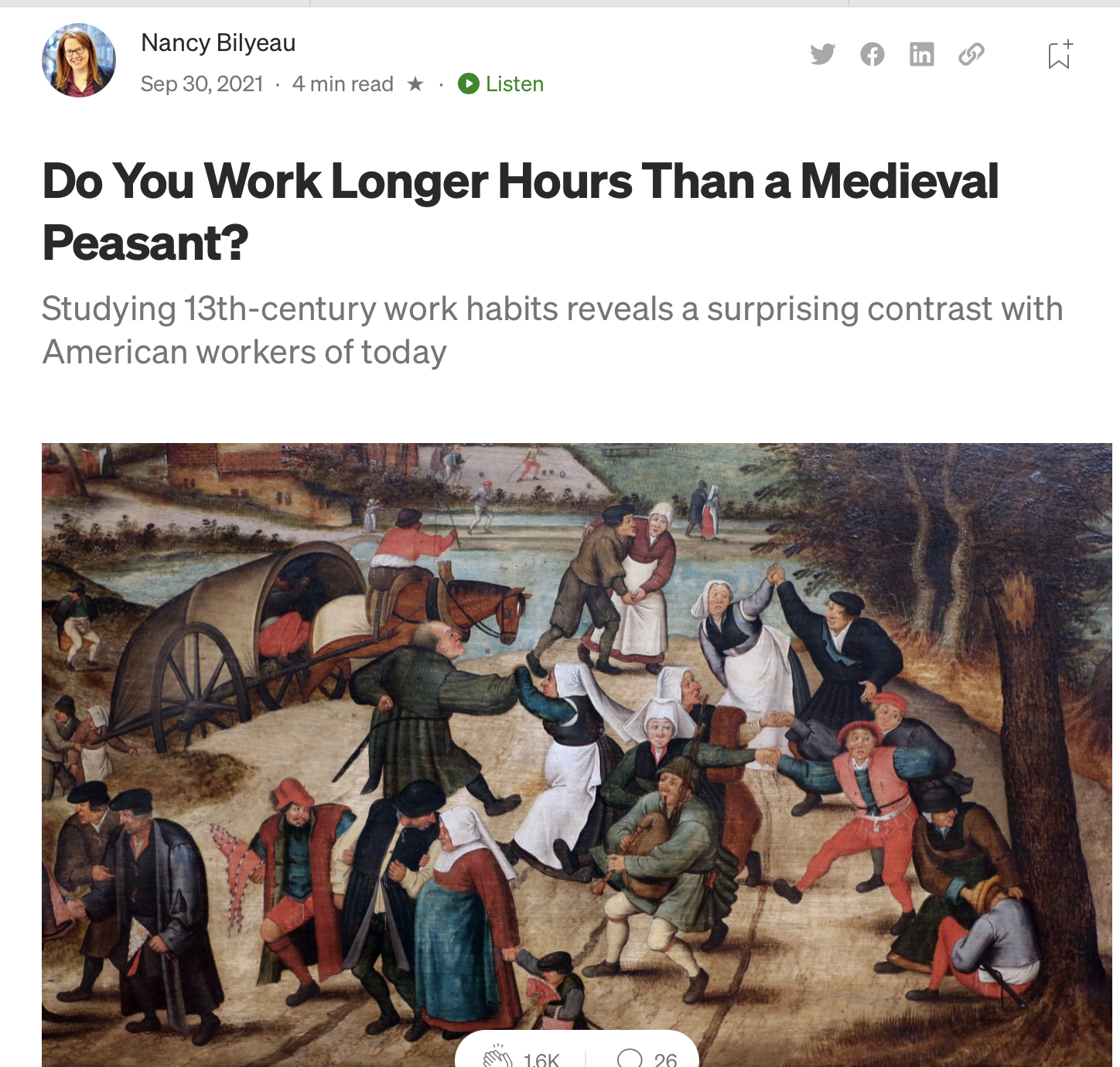An ahistorical culture
/The goal of those who would be our masters has always been to create “a new man”; Marx wasn’t the first to advocate this, but the ”progressive” movement seized on the mad racist’s idea and has been pushing it, hard, since at least the Wilson era. They’re just about finished; the products of modern education no longer study or have any knowledge of the past, and are encouraged in that ignorance so that others might rule.
I drafted a too-long essay on this subject over the weekend, focusing on how “they’ have cut the past two generations off from history and invented a new one that teaches that the country was founded on racism, the constitution was drafted to preserve slavery, and every “white” man, from Plato to James Madison to Lincoln, to Winston Churchill could and should be dismissed because they were supporters of slavery (?), and that the world was the Garden of Eden before white capitalists arose and ruined everything. Drafted, but didn’t post, and then this item caught my eye: it perfectly encapsulates the ignorance of history being inculcated in modern students even though it’s on a subject that pales in significance compared to the erasure of human thought and history.
(Before Wikipedia catches up with this “biography” of Miss Dungey, let’s preserve it for posterity, shall we?)
But how could things have possibly been better in medieval times?
“Before capitalism, most people did not work very long hours at all,” wrote Schor in her book. “Consider a typical working day in the medieval period. It stretched from dawn to dusk (sixteen hours in summer and eight in winter), but, as Bishop Pilkington has noted, work was intermittent — called to a halt for breakfast, lunch, the customary afternoon nap, and dinner.”
Depending on time and place, there were also midmorning and midafternoon refreshment breaks. These rest periods were the traditional rights of laborers, which they enjoyed even during peak harvest times.
And even during slack periods, which accounted for a large part of the year, adherence to regular working hours was not usual. According to Oxford Professor James E. Thorold Rogers, the medieval worker did not labor for more than eight hours in a single day.
Plowing and harvesting were backbreaking toil, no doubt, but the peasant enjoyed anywhere from eight weeks to half the year off.
And here, for however long it’s permitted to be discussed, is the reality:
The lives of peasants throughout medieval Europe were extremely difficult. Although the specific characteristics of peasant life varied based on region, in general, medieval peasants lived in an agrarian society. Feudalism defined the social structure of medieval Europe from roughly the tenth century to the fifteenth century, situating peasants on the lowest rung of the social ladder. Under feudalism, peasants lived in a state of serfdom, a condition that essentially turned them into rural slaves. The rigid and cruel medieval system of law and order that accompanied feudalism succeeded as a tool for social control and largely prevented peasant resistance or rebellion. Feudalism declined steadily throughout the medieval period and was nearly extinct in Western Europe by the Renaissance. This was due in part to the demographic catastrophe in Europe that occurred as a result of the Black Death and the increasing indignation among peasants regarding increasingly severe tax policies.
Peasants lived in unhygienic and disease-ridden environments. Their water supply was typically filthy, as it was also where people deposited waste. Most peasants bathed once or twice throughout their entire lifetime. Peasants lived in small houses, which were also filled with bugs and disease. It was traditional to bring farm animals into the house every night to protect them from being stolen or from wandering off. The Catholic Church exercised extreme power over peasant life and influenced the foundations of peasant culture and society. Although the church was often oppressive in its stringent tax requirements, it also sanctioned several festivities throughout the year where peasants enjoyed festivals and celebrations.
The everyday lives of medieval peasants were extremely harsh and taxing. The majority of peasants worked as farmers, and their lives were primarily dictated by the growing seasons. Peasants typically lived in small dwellings referred to as cruck houses, which comprised a wooden frame plastered with a mixture of mud, straw, and manure. The roofs were thatched and the floors were typically lined with straw. These houses would have had very little insulation and would have been incredibly cold in the winter and hot in the summer. There would have been minimal furniture in a cruck house—families would cook, eat, live, and sleep in the same room on mattresses filled with straw (as well as fleas and lice). Peasants used the same water supply for cooking, cleaning, and dumping waste, leading to contaminated water and widespread disease. Many peasant children died during their infancy from disease, and those who survived endured an incredibly difficult and labor-intensive upbringing. Children were expected to help in any way possible around the house until they were considered old enough to work in the fields with their parents.
In addition, what Ms. Dungey and Professor Bilyeau don’t know, because it isn’t covered on Tik Tok, is that, had they been living in that far off time of vacations and festivals, they would have had a 30/70 chance of dying in childbirth; half the children they did manage to bring into the world would have been dead by 7, and Biyeaus, being over 40, would already be dead, worn out from endless toil and a starvation diet.
This is the Great Reset that’s on the cusp of success.
UPDATE: Whoa, I hadn’t realized it, but apparently, the movement towards a return to the medieval period is the new “thing”.





